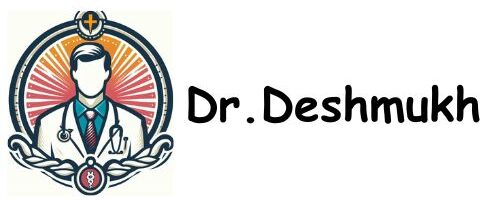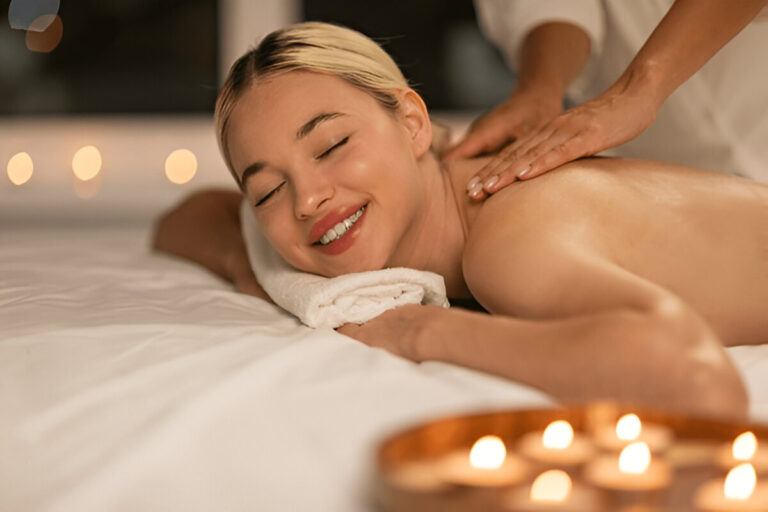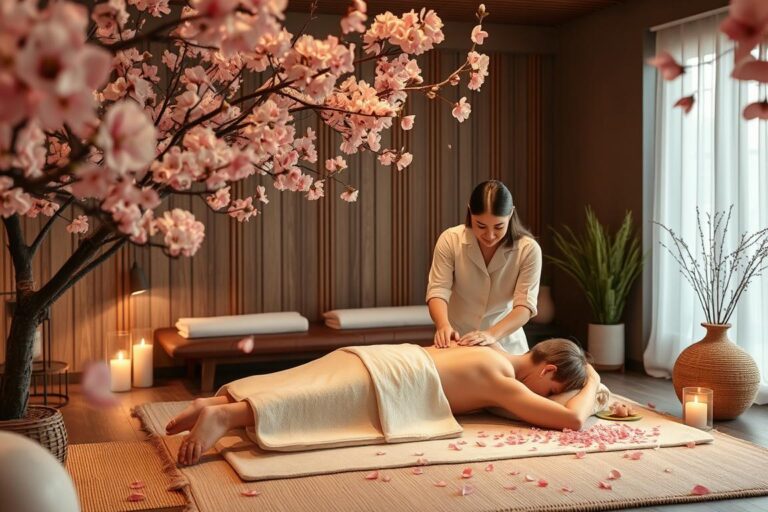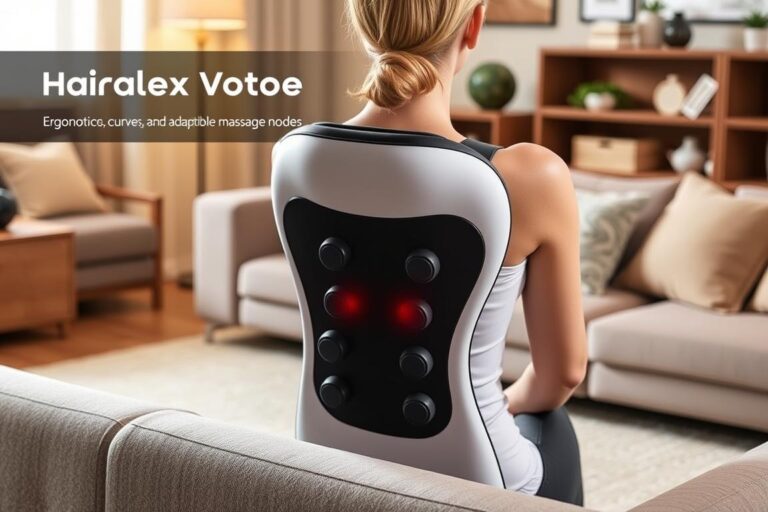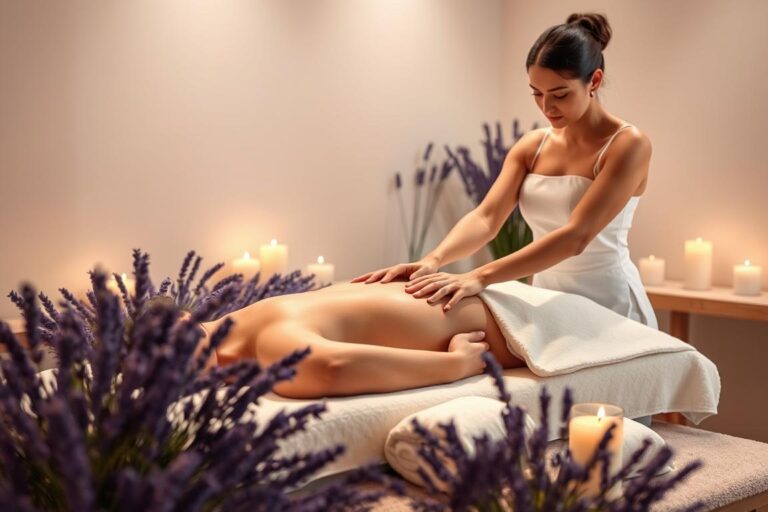Experience Healing with Chinese Massage Therapy
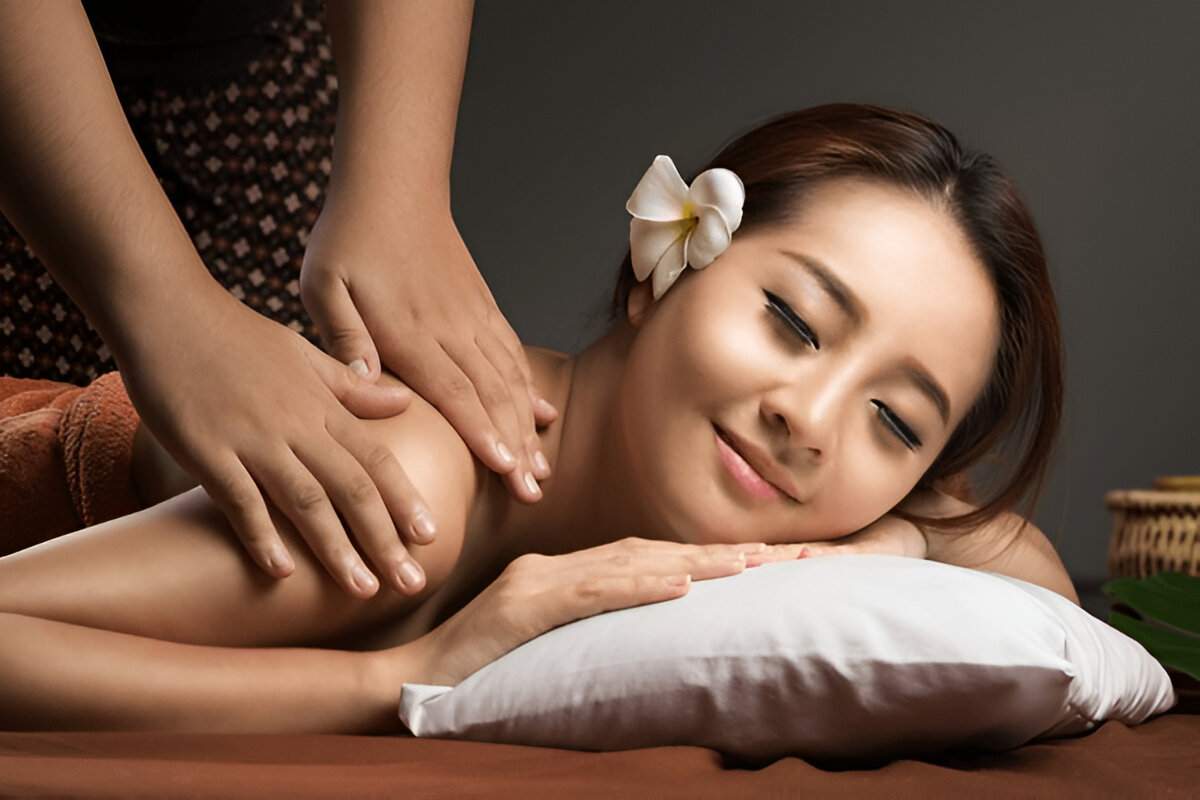
Did you know 75% of athletes in Edmonton use Tui Na therapy? It helps them stay at their best. This ancient practice is more than just recovery. It’s about feeling whole again.
Chinese massage therapy is based on Traditional Chinese Medicine. It uses techniques like Tui Na, Zhi Ya, and Gua Sha. These methods help with pain, stress, and flexibility.
By trying these practices, you can feel your body and mind come alive. They help you find balance and well-being.
Table of Contents
What is Chinese Massage?
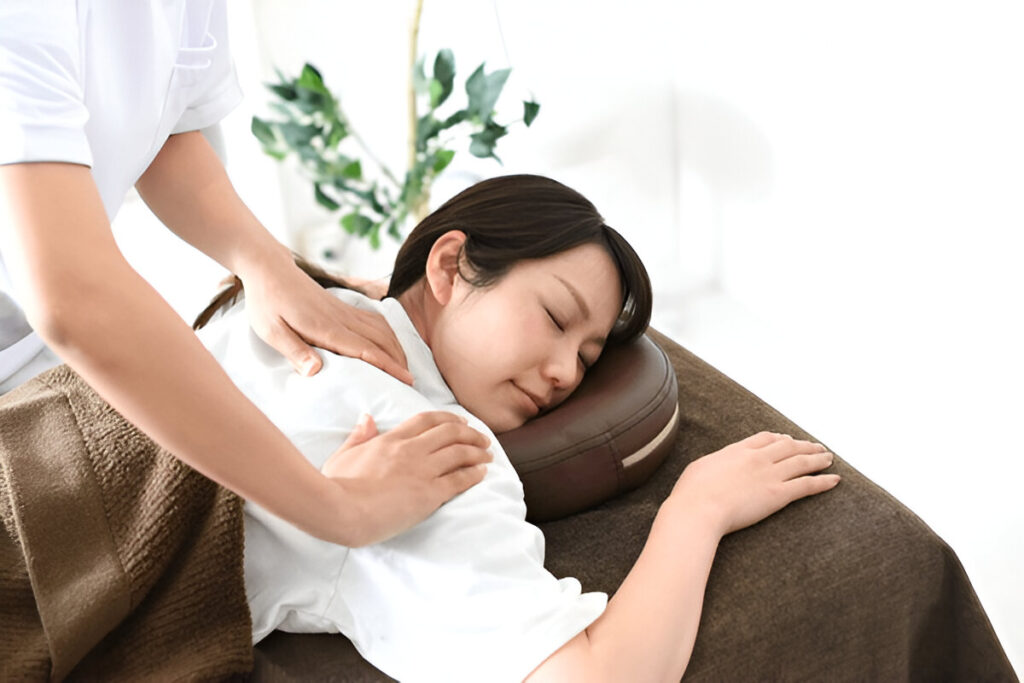
Chinese massage has its roots in ancient China, around 3,000 BCE. It uses traditional Chinese medicine to help the body. It aims to improve the flow of Qi and blood.
This practice helps balance the body. It offers many benefits for health and well-being.
Understanding the Roots in Traditional Chinese Medicine
Chinese massage comes from traditional Chinese medicine. The Nei Jing, from 2700 BCE, talks about massage’s health benefits. It helps the body and mind work together.
These methods can fix health problems. They make life better.
Common Techniques: Tui Na, Zhi Ya, and Gua Sha
Chinese massage has many techniques. Each one has its own way of helping.
- Tui Na: This massage uses pressure and stretching. It makes muscles flexible and relieves tension.
- Zhi Ya: It focuses on acupressure points. This technique helps relax and relieve tension.
- Gua Sha: Scraping tools are used here. They improve blood flow and detoxify the body.
These methods help with blood flow and stress. They show how Chinese massage can improve health. Learn more about Ayurvedic practices for wellness.
Benefits of Chinese Massage
Chinese therapeutic massage is great for both your body and mind. It offers many benefits that can help you feel better. Knowing these can help you choose the best holistic care.
Physical Health Benefits
Massage helps a lot with pain. It targets pain and swelling, helping with long-term issues like arthritis and back pain. It also boosts blood flow.
This means you can recover faster from exercise and have better heart health. Other benefits include:
- Reducing muscle tension and swelling.
- Helping your digestion with techniques like abdominal kneading.
- Boosting detox by improving your lymphatic system.
- Keeping your hormones balanced, which is good for your body and mind.
Mental and Emotional Well-Being
Stress is a big problem in today’s world. Chinese massage can really help with this. It lowers stress, makes you relax, and boosts your energy.
It also helps your mental health in many ways. These include:
- Improving sleep by reducing tension and stress.
- Making your mood more stable, especially for those with depression.
- Lowering cortisol, which increases serotonin and dopamine, improving your mood.
Techniques Used in Chinese Massage
Chinese massage therapy uses many techniques to help health and well-being. Tui na, zhi ya, and gua sha are key. They offer special benefits that make therapy better.
Overview of Tui Na
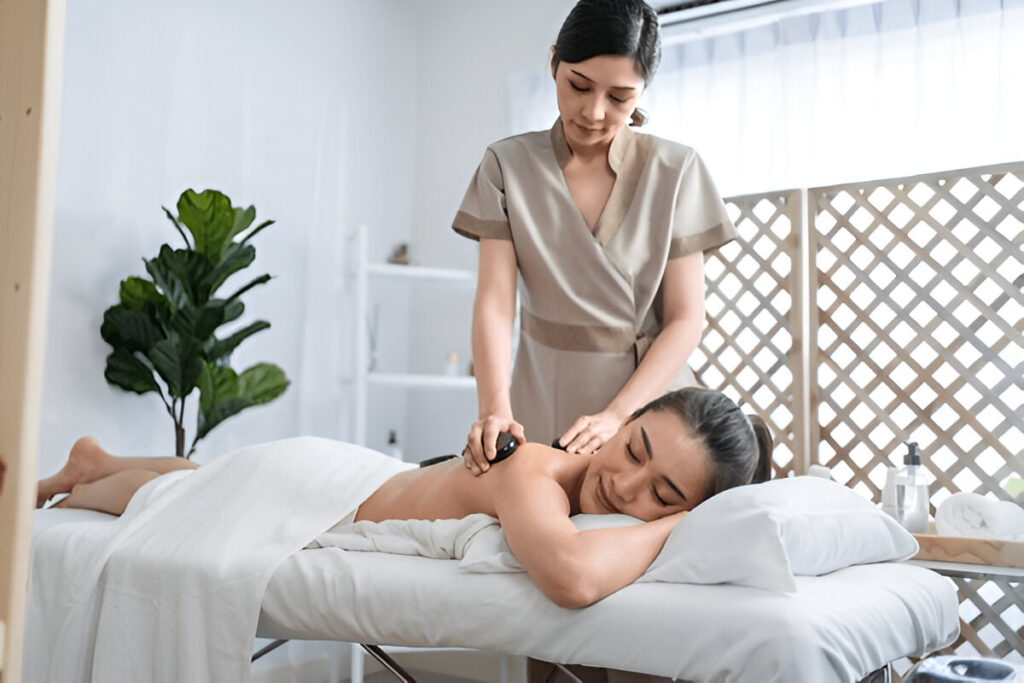
Tui na massage is a big part of Chinese massage. It uses pressing, kneading, and rolling to move energy. It helps with physical pain and mental focus.
The movements help break down scar tissue. They also improve blood flow and body movement.
Exploring Zhi Ya Technique
Zhi ya massage focuses on certain points for tension and pain. It applies pressure to release blockages in the body. This helps with chronic pain and boosts healing.
How Gua Sha Works
Gua sha uses a tool to gently scrape the skin. It helps with circulation and detox. It’s great for sore muscles and injuries.
Adding gua sha to a massage can make you feel more energetic and well.
| Technique | Description | Benefits |
|---|---|---|
| Tui Na | Massage utilizing pressing, kneading, and rolling. | Improved circulation, reduction of pain, enhanced flexibility. |
| Zhi Ya | Acupressure technique targeting specific points. | Relief from localized pain, boosts natural healing. |
| Gua Sha | Scraping technique using a smooth tool. | Enhanced circulation, detoxification, reduced muscle tension. |
How to Experience Chinese Massage Therapy
Getting ready for Chinese massage therapy can make your experience better. Just a few steps can help you enjoy its many benefits. Knowing what to expect makes the session more comfortable for you and your therapist.
Preparing for Your Session
Arriving early is key when preparing for massage. It gives time to talk about your health and any areas you’re worried about. Think about what you want from the massage, like relaxation or pain relief. Wear simple clothes to make it easier for your therapist to work on you.
What to Expect During a Treatment
During your session, you’ll get a mix of techniques to ease pain and improve energy flow. These methods help your body relax and your Qi flow better. Sessions usually last 30 to 90 minutes, depending on what you need and the therapist’s style. Learning about other pain relief methods can also help your Chinese massage experience.
| Massage Concern | Recommended Sessions |
|---|---|
| Neck stiffness | 1 to 3 sessions |
| Acute lumbar sprains | 3 to 5 sessions |
| Chronic cases (e.g., organ dysfunction) | Up to 3 months |
| Stubborn joint problems | Extended period needed |
| Traumatic injuries | Varies by severity |
Being well-prepared for Chinese massage therapy can make your treatment more effective and enjoyable.
Who Can Benefit from Chinese Massage?
Chinese therapeutic massage helps many people, especially athletes and those with chronic pain. It’s a holistic therapy that works on many levels. This ensures full relief and recovery.
Athletes and Active Individuals
For athletes, hard workouts can cause muscle strains and tiredness. Chinese massage, especially Tui Na, helps a lot. It offers:
- Less soreness after working out
- Better flexibility and movement
- Higher performance levels
Studies show massage therapy after injuries cuts down inflammation. This leads to quicker healing and better sports performance. Athletes often use Tui Na to stay in top shape.
Individuals Suffering from Chronic Pain
Those with chronic pain can also find relief in Chinese massage. It helps with arthritis, fibromyalgia, and back pain. Techniques like Zhi Ya target pain spots, easing discomfort and improving movement. Benefits include:
- Greatly improved chronic neck pain with Tui Na
- Less back pain with Tui Na and core exercises
- Fast recovery for carpal tunnel syndrome with Tui Na and acupuncture
Many people say they feel better and need less pain meds after regular massage. This therapy is a good choice for chronic pain, improving life quality.
Best Practices for Giving a Chinese Massage
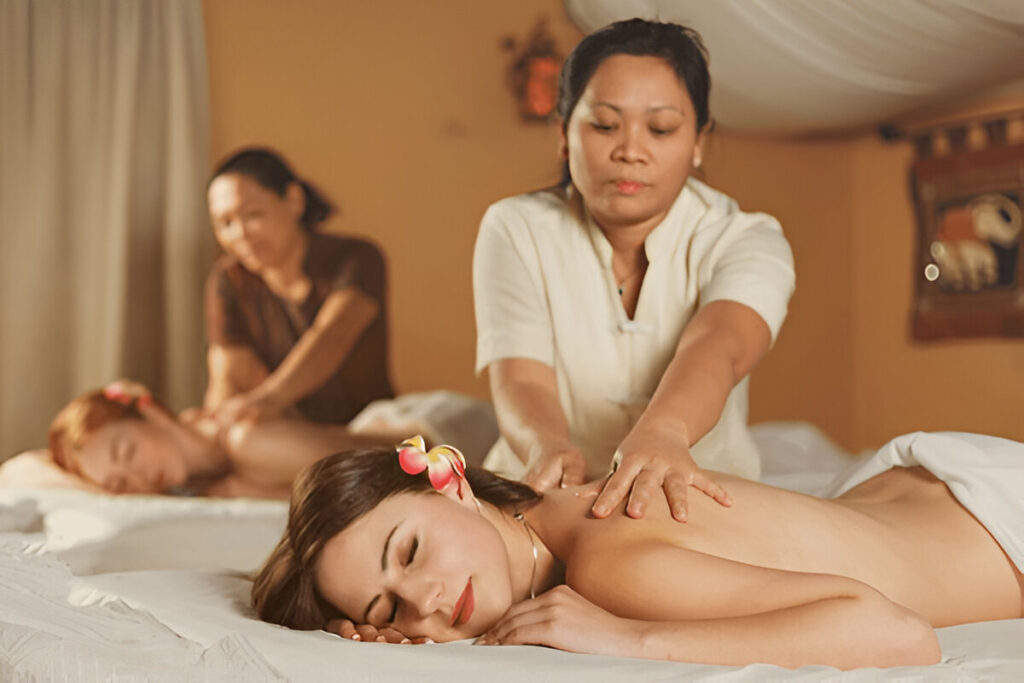
Want to be great at giving a Chinese massage? You need to learn key massage techniques. Tui Na, acupressure, and stretching are important. They help you fix pain and keep your client comfy.
Key Techniques to Learn
Here are the main massage techniques to learn:
- Tui Na: It’s about kneading and rolling to relax and relieve pain.
- Acupressure: Pressing on special points helps flow energy and ease pain.
- Stretching: Gentle stretching boosts flexibility and relaxation.
Knowing these basics is key to a great massage.
Safety Tips for Practicing
Keeping safe is crucial when giving a Chinese massage. Here are some safety tips:
- Talk openly with clients about what feels right and wrong.
- Consider each person’s health needs to avoid harm.
- Use the right body mechanics to avoid hurting yourself.
Being safe and skilled in massage makes for a great experience. Being open with clients builds trust. This lets comfort and relaxation grow. Always keep safety in mind as you get better at giving Chinese massages. For more on staying healthy, see this resource.
Cost of Chinese Massage Therapy
It’s important to know how much Chinese massage therapy costs. This type of bodywork has many benefits. But, the price can be a big factor in whether people try it.
The cost changes a lot. It depends on where you are, the therapist’s experience, and how long the treatment is.
Pricing Overview in the United States
In the U.S., a half-hour Chinese massage costs between $50 and $100. An hour-long session can cost between $80 and $150. The price goes up or down based on the techniques used and the therapist’s skills.
Many people say they feel great after getting a massage. They like the therapist’s skill and the service they get. This makes the cost worth it.
| Duration | Price Range |
|---|---|
| 30 Minutes | $50 – $100 |
| 1 Hour | $80 – $150 |
Insurance Coverage Options
When thinking about the cost of Chinese massage, check your health insurance. Many plans cover massage therapy. But, the coverage can differ a lot.
It’s key to ask your insurance about *insurance for massage therapy*. Therapists with lots of experience and training are in high demand. This means they offer better service. So, getting a massage is not just healing but also a good investment.
Massage Products for Effective Chinese Massage
To make Chinese massage better, using special massage products is key. These tools help with traditional methods and make treatments more comfortable. They also add variety. Some popular choices are:
Top Recommended Tools
- Gua Sha Tools: These tools, made from jade or rose quartz, help improve blood flow and ease muscle tightness.
- Chinese Massage Ball on Stick: Made from jade, this tool lets you use different techniques and intensities to work on muscles.
- Acupressure Mats: These mats press on body points, helping you relax and lower stress.
Using these products can make your massage more enjoyable and effective.
Essential Oils to Use
Essential oils are important for making Chinese massage therapy better. The right oils can make you feel better and lift your mood. Here are some good ones:
- Eucalyptus: This oil wakes you up and helps with muscle pain.
- Lavender: It’s great for calming down and relaxing during a massage.
- Chinese Ginger: It warms you up and helps with tension and relaxation.
Use 1 to 3 drops of essential oil per ounce of carrier oil, lotion, or cream. Always follow safe usage guidelines for the best results.
Chinese Reflexology: A Complementary Therapy
Chinese reflexology is based on an old idea. It says certain spots on the feet connect to body parts. By pressing these spots, therapists try to help the body stay healthy. This method works well with traditional Chinese massage, making treatments better.
Understanding Reflex Points
Reflex points are like doors to body functions. Therapists use these spots to help the body heal. Some key spots include:
- Heart point: At the big toe tip, it helps the heart.
- Solar plexus point: In the foot’s middle, it helps with stress and feelings.
- Liver point: On the right foot, it helps with cleaning and digestion.
Many people feel better after trying chinese reflexology. They sleep better and feel less anxious. It also helps with nausea and tiredness, especially when going through chemotherapy.
Benefits of Combining Techniques
Mixing chinese reflexology with massage brings many health benefits. Studies show that reflexology can:
| Condition | Benefit Observed |
|---|---|
| Fatigue in Cancer Patients | Significant reduction in fatigue levels |
| Anxiety | Marked decrease in anxiety compared to control group |
| Nausea and Vomiting | Decreased symptoms during cancer treatment |
| Hypertension | Reduced heart rate and blood pressure effectiveness |
Combining reflexology and massage helps with stress, boosts immunity, and improves mood. People often say they feel better after trying these therapies. Adding acupressure can help relax and recover even more, leading to better health.
Finding a Qualified Practitioner
Finding a good Chinese massage therapist is key for a safe and helpful experience. You need to know what you want and do your homework to find the right person. Start by looking at their credentials and reading reviews. Make sure they have the right training in Traditional Chinese Medicine (TCM) and techniques like Tui Na.
Ask friends or check online for their opinions. Their feedback can be very helpful.
How to Research and Choose the Right Therapist
Here are some steps to help you pick the best massage therapist:
- Check their qualifications and certifications.
- See if they have experience with your issues.
- Find out what treatments they offer.
- Look at their schedule and how easy it is to book.
- See if they work with your insurance.
Use tools like Look up a License® to check if they are licensed in your state. This ensures they follow the rules.
Questions to Ask Before Booking
Before you book, ask questions to understand the therapist better. Ask about:
- How much experience they have with your condition.
- The techniques they use and their treatment plans.
- How they make sure you are comfortable during sessions.
- How often they recommend sessions and their policies on canceling.
- Costs and how they handle insurance.
Building a good relationship with your therapist is very important. Talking openly helps build trust and comfort. This makes your massage more effective. For more tips, check out this guide on choosing a massage practitioner.
Where to Find Chinese Massage Near Me
Finding a Chinese massage service near you can really boost your wellness. Cities like Dallas, Tampa, San Jose, Houston, Philadelphia, Jacksonville, and Charlotte have lots of options. This means you can find a local expert who fits your needs perfectly.
Finding Local Practitioners
Use Booksy to find local massage therapists and top Chinese massage spots. This online tool lets you search, explore, and book with nearby experts. Always check customer reviews for a true feel of the service and experience.
Online Directories and Reviews
Yelp or Google Maps can help you find reliable local massage therapists. Many therapists share their services and specialties on their websites. Reading reviews is key; they talk about great therapists, relaxing sessions, and clean places. This helps you pick the right therapist for your health and relaxation needs.
Integrating Chinese Massage into Your Wellness Routine
Adding Chinese massage to your wellness routine can really boost your health and energy. It helps your body recover from hard work and eases daily stress. Getting it done every two weeks can make a big difference in your self-care.
Keeping a regular schedule lets you enjoy the mix of massage and acupuncture. These methods help with pain, inflammation, and mood. They help your body heal and relax, reducing stress and anxiety.
Adding nutrition, meditation, and exercise to your routine can make Chinese massage even better. This whole-body care improves flexibility and balance. So, making these habits part of your life is essential for lasting health and wellness.
FAQ
What techniques are commonly used in Chinese massage?
How does Chinese massage benefit mental health?
Can Chinese massage help with chronic pain conditions?
How long does a typical Chinese massage session last?
Is it necessary to prepare before a Chinese massage?
How can one find a qualified Chinese massage therapist?
Are there specific products that enhance the effectiveness of Chinese massage?
What is Chinese reflexology, and how does it relate to massage?
How much does Chinese massage therapy typically cost?

